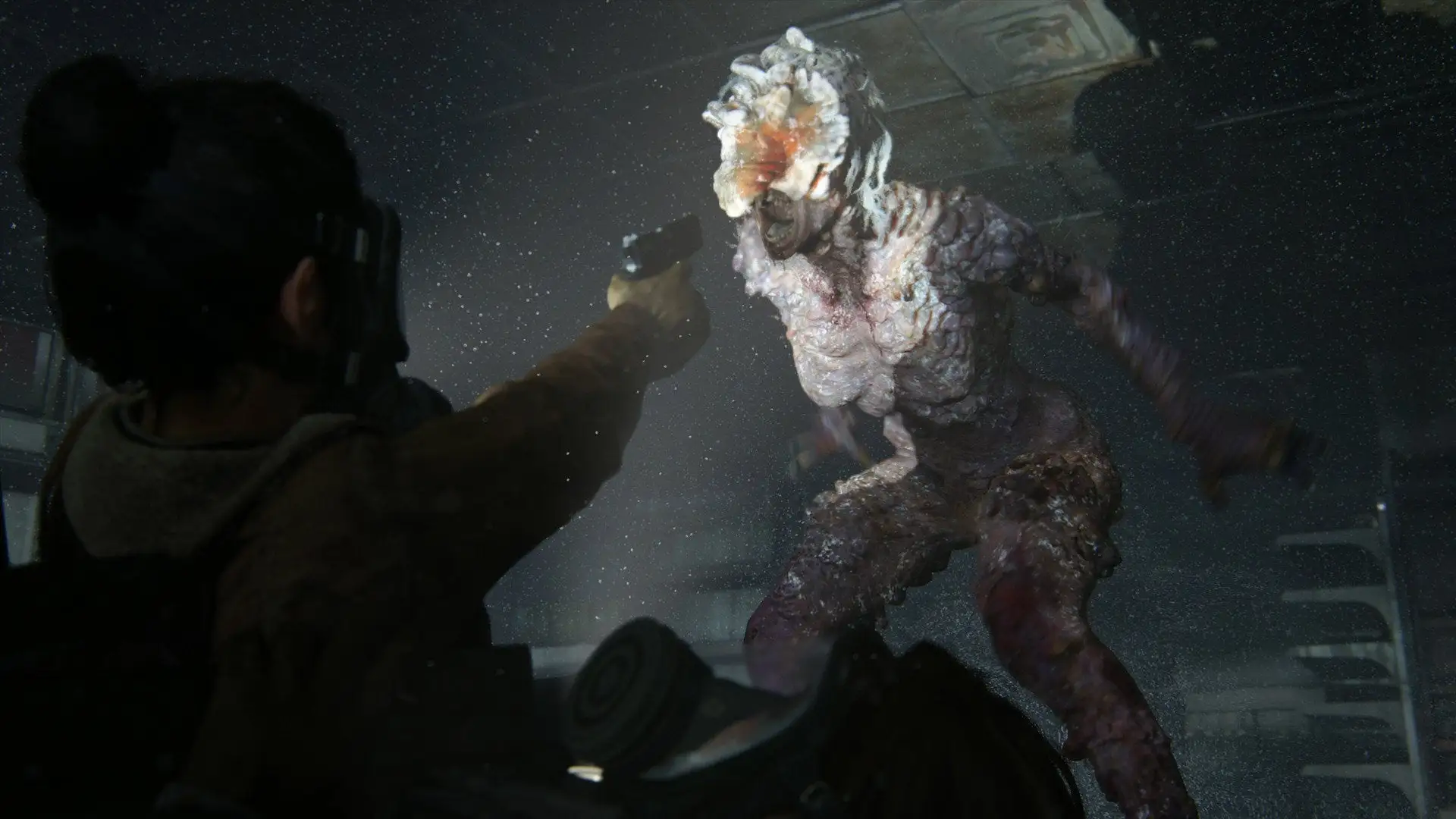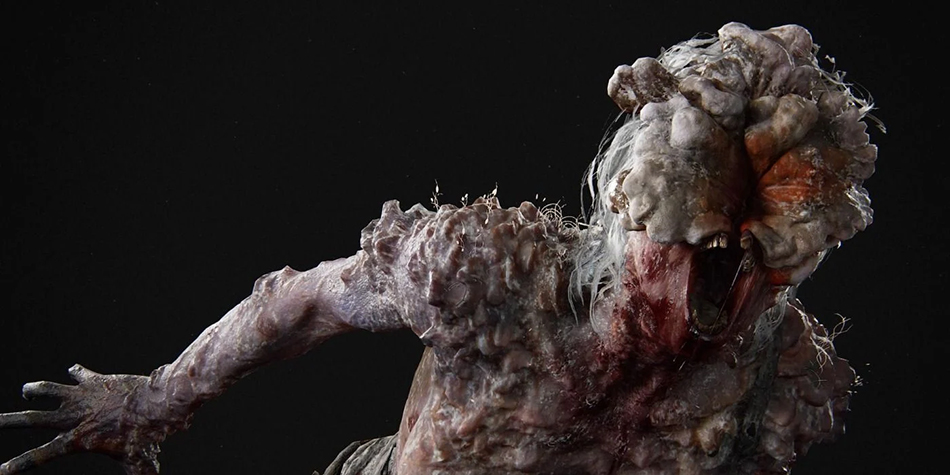A Guide to Every Infected Type in ‘The Last of Us’

So you want to look into the face of Hell, do you? These things are worse than the devils of Chainsaw Man, worse than the fiends that crawl and slither in the pages of the Ars Goetia. These things may even be worse than this man (but that might be a stretch).
I’m talking of course about the nightmarish, hair-raising, bloodcurdling, soul-withering, skin-crawling former humans of The Last of Us. They are, by far, the worst undead creatures to have ever been dreamed up in the dark recesses of human consciousness—worse than the shambling Walking Dead zombies, worse even than the lightning-fast infected of 28 Days Later. The infected of the Resident Evil universe may possibly be stronger than those of The Last of Us, but they are by no means scarier.
With the release of the new HBO series, it’s likely that we’ll see some—or all—of these terrifying spore-vectors in live-action. And there are many different types, each with their own personalities and quirks and body horrors, sort of like a Furby. A really slimy Furby. Gird your loins and grab your shotgun ammo, because we’re about to wander through a menagerie of horrors beyond your wildest nightmares.
First off, how are these monsters created?
The creatures of The Last of Us are based on a fungus. A terrifyingly real fungus. The fungus is called Cordyceps, and is a fictional strain of a very real group of fungi that are generally found in South America. What makes these fungi so nasty? Well, for starters, one strain of them is able to hijack the brains of ants and make them starve themselves in order for the fungus to sprout out of their heads and spread its spores. It’s disgusting. It’s horrifying. It’s the stuff of nightmares. And it was a veritable gold mine for the writers of The Last of Us.
In the game, the Cordyceps fungus latches on to shipments of crops from South America. From there, it begins traveling the world and infecting all of the humans who consume these crops, hijacking their brains and turning them into hideous creatures that shun the light of day. Unlike most parasitic infection strains, the Cordyceps virus has multiple stages, depending on how long the victim has been infected. Each stage is more horrifying than the last, culminating in monsters that may as well have crawled out of the ninth circle of Hell. Probably because Satan himself didn’t even want them there anymore.
Stage 1: Runner

Freshly infected, runners have had the virus for less than two weeks. The virus is given to them by a bite from another infected, and takes hold within minutes. Unlike other infected, runners maintain their sense of sight and are less inclined to seek out dark, damp places. Runners are called runners because they run. At you. Very fast. They are similar to the infected from 28 Days Later, as they lack any sense of self-preservation and do not seem to feel pain. When not trying to eat you, runners spend their time wailing and moaning while looking for prey. There is a theory that at this stage, the infected are actually still conscious, and that their tortured lamentations come from the fact that they are aware of their fate but powerless to change it. Let’s hope not.
Stage 2: Stalker

These infected are the most annoying out of all the stages, particularly because of how good they are at scaring the living daylights out of you. Stalkers have been infected anywhere from two weeks to a year and they hide in dark and damp places to hunt for prey. What makes them the worst? They’re smart. Unlike runners, that, well, run at you while screaming and flailing, stalkers prefer to stalk you in the dark. They will run away from you when spotted, only to sneak up behind you moments later. They are not unlike a cunning predatory animal; they even run and crouch on all all fours. Stalkers are best dealt with via a swift shotgun blast to the face.
Stage 3: Clickers

Okay, remember how I said that stalkers are the best at scaring the living daylights out of you? Well, I lied. Clickers actually take this trophy. There is nothing worse than stepping into a dark, water-logged basement and hearing these bastards shuffling around in the dark. Clickers are infected that have had the virus for at least one year. At this stage of the infection, the Cordyceps has mushroomed out of their skulls and covered their faces and eyes with a thick, hard plate of fungus. Because of this, they are totally blind.
So how do they hunt? They echolocate. Like bats. But way less cute. Clickers shamble through the dark croaking and groaning in their pursuit of prey. And when they do, woe to you. Clickers are exceptionally strong, much stronger than human beings, and can easily physically overpower a person. If you run into one, aim for the chest and pray.
Stage 4: Bloaters

At this stage, the infection stops playing fair. Bloaters have been infected for several years, long enough for their bodies to become totally covered in hard fungal plates. They are basically organic tanks, strong enough to rip apart human beings with their bare hands. To make matters worse, they are also capable of ripping off sacks of spores that grow from their body and chucking them at people. It sucks. Really. Usually they are encountered as bosses within the games, but can sometimes appear alongside clickers. These things eat bullets, so if a bloater sees you, kill it with fire. Lots of fire.
Special Type: Shamblers

Shamblers are a type of infected that are unique to the rainy climate of the Pacific Northwest. They are not as physically powerful as clickers or bloaters, but make up for it with their ability to explode. Shamblers prefer to run right up to you, grab you, and release a cloud of acidic spores which basically melt your skin off. Not even death stops these things: When they are killed, they release a final explosion of spores that will really screw up your victory celebration.
Special Type: Rat King

There may only be one Rat King in existence, as only one was encountered during the events of The Last of Us 2. That specific Rat King took up residence in a hospital in Seattle, and had been festering there for nearly 20 years. The Rat King is not an infected, but rather a colony of infected that, similar to the real-life rodent counterpart, have glommed onto each other in order to form one body. They are colossal in size, and extremely powerful and aggressive. Kill them with A LOT of fire. Along with shotgun shells, rifle rounds, Molotov cocktails, and a healthy smattering of pipe bombs. The worst thing about a Rat King is that when they take damage, they split up into multiple infected that are capable of attacking alongside the larger mass. Last of Us 2 protagonist Abby Anderson was lucky enough to survive by the skin of her teeth when she encountered one. I’m not sure if you will be so lucky.
(featured image: Naughty Dog)
Have a tip we should know? [email protected]
